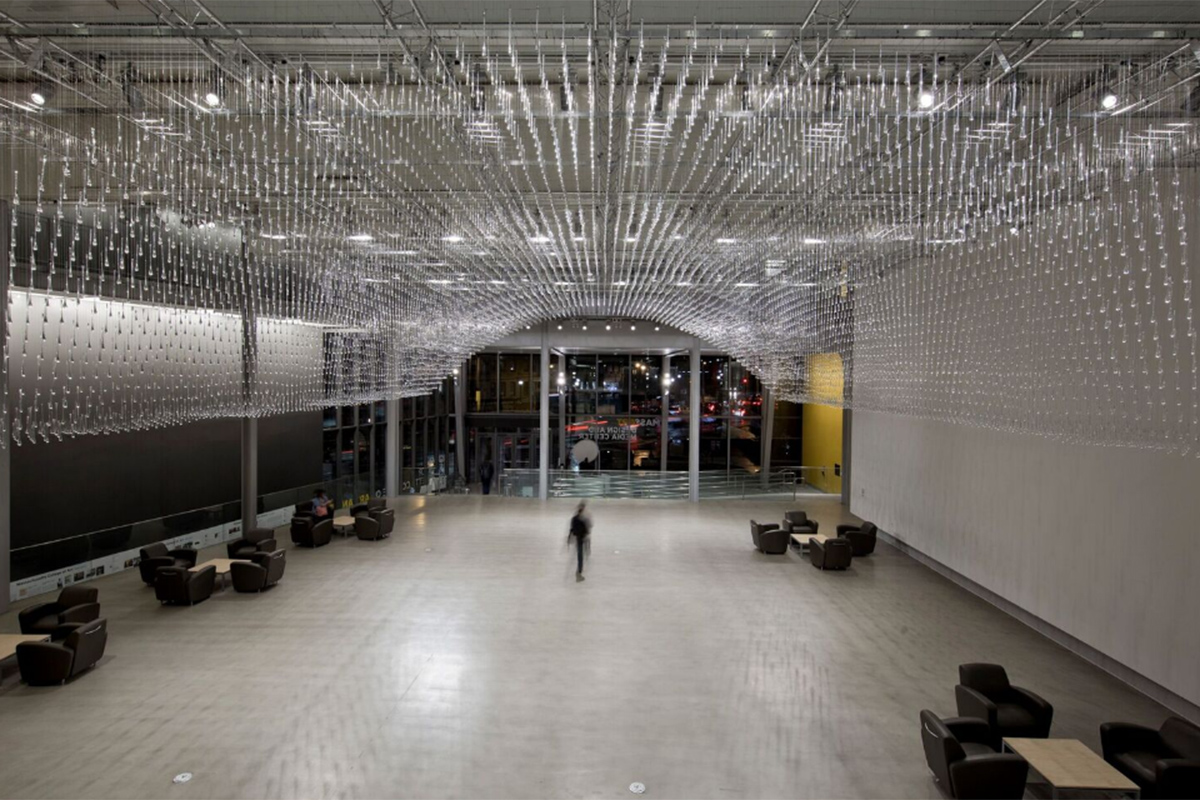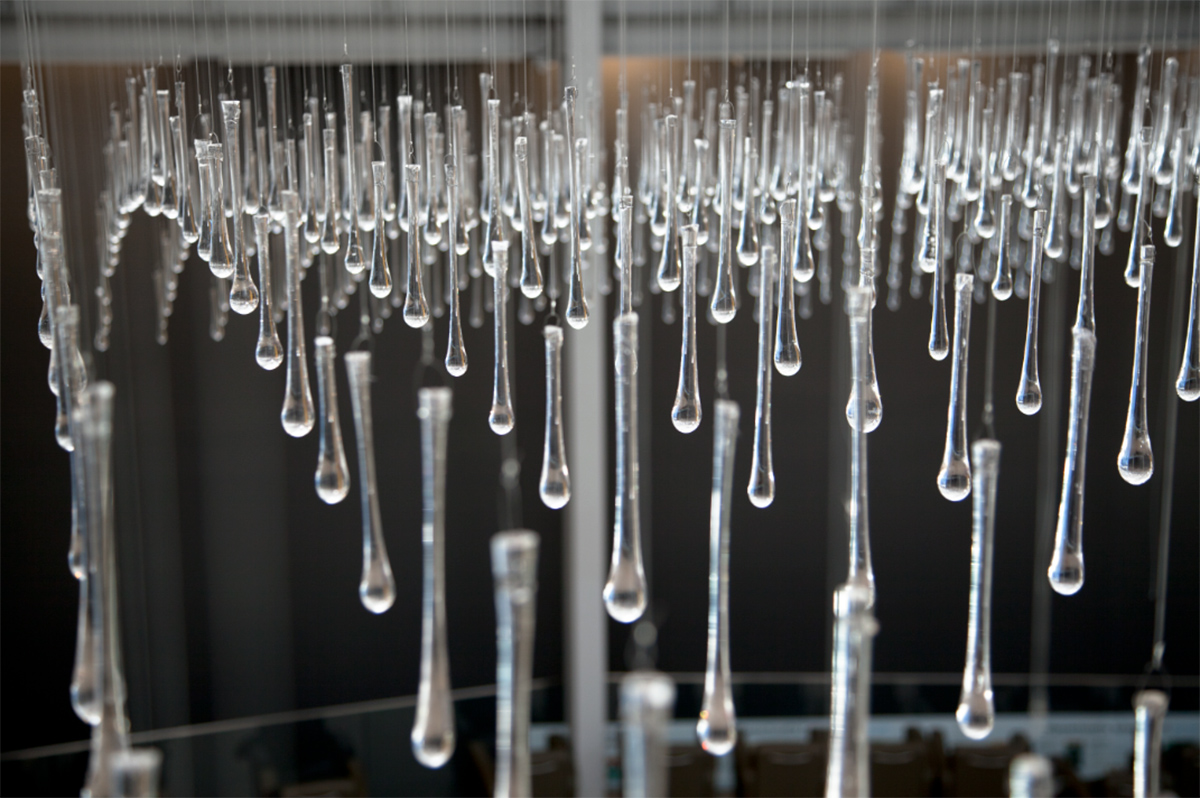10,000 Glass Raindrops Hang from Above at MassArt

Courtesy Photo by Will Howcroft
Talk about makin’ it rain. The next time you have a chance to stop by MassArt’s Design and Media Center, look up. In late January, the school unveiled a new installation, Rainfield, that features 10,000 individually handmade glass raindrops hanging from above.
Sculptor Daniel Clayman designed and constructed the work with assistance from students enrolled in his course, “Structured Light,” at MassArt last fall. Each raindrop was individually dripped off the end of a rod, and each with a “slight flare” at the top, according to Clayman, so that the stainless steel wires, used for hanging the drops from the ceiling, could latch to them. Clayman and his students made 11,000 raindrops total—the students alone made roughly 8,500. Together, the sculptor and his students also created a hanging system below the already existing trusses in the Design and Media Center, which, Clayman explained, were too large for his project.
“Their trusses are like something you would see at a concert holding all the light systems up. Me and my student crew attached a hanging system below that consisted of aluminum tubing, and we then clamped some wire mesh onto that aluminum tubing,” he says.
Clayman and his students worked on the installation from September 5, 2016, to January 22, 2017, with a week off for Christmas. While he worked full-time on Rainfield, the crew of students worked two days per week. The most time-consuming work involved engineering, fabrication, and setting up the hanging system, while the actual installation of the raindrops lasted only 26 days, despite the high number of raindrops.

Courtesy Photo
“The crew was my class, the class was my crew,” Clayman says. “The students were, by and large, really excited about the project. I really was looking for input from the students, both as the evolution of the idea happened and as we solved all the technical problems. The biggest thing I try to impart doing a project like this and teaching and using the student crew is this joy of intensity, of letting them see there’s a lot to do, but, over time, you acquire the skill set and knowledge, and all these crazy ideas are possible.”
He drew inspiration for the project from a rainy April day in Rhode Island, but he knew from the start that he didn’t want to pursue a purely abstract idea.
“On the first warmish, spring day, I was walking in downtown Providence and I didn’t have a raincoat on—I was wet. And I just kind of started thinking about rain. By the end of the day, when I was going to bed, I was really thinking about the word ‘rainfield.’ But I didn’t want that to be a random, abstract rainfield. So, I came up with the idea that the placement of the raindrops could emulate great architecture,” Clayman explains.
The sculptor was especially inspired by the Gothic cathedrals of France, and, for this reason, his initial idea involved shaping the raindrops into a Gothic arch. However, the final installation features a Roman Arch, which lacks the pointed top of the Gothic Arch.
“As it turned out, there were a lot of concessions, and I don’t think they resulted in any devaluing of what I was doing, but I had to take into account lots of things in terms of the structure. I literally went back to the drawing board and redrew what I was going to do. So, instead, we made what’s called a Barrel Arch, or Roman Arch. In some ways, I think it was way more successful because it doesn’t have the religious connotation that a Gothic Arch does. It’s much more a simple wonder about the space and scale and these raindrops, each one that drips differently, that have stopped in the air in a certain pattern,” he says.

Courtesy Photo
Rain, for Clayman, also possesses a certain poetry and nostalgia.
“Rain can be so much to so many people. It’s tears, it’s joy, it’s sorrow. In my life, rain is the perfect relaxation because my childhood bedroom had a copper roof. It’s still such a visceral memory of listening to that rain on a copper roof,” he says.
“It was only possible with the cooperation from all levels of the college. I’m really forever thankful. The president, the students, the faculty were all incredibly welcoming.”
Rainfield is currently on view, free and open to the public. It will remain installed at MassArt’s Design and Media Center at least until September 2017, and may stay for up to two years.


